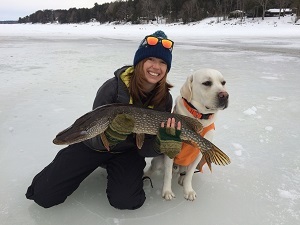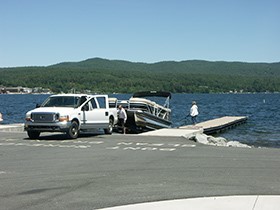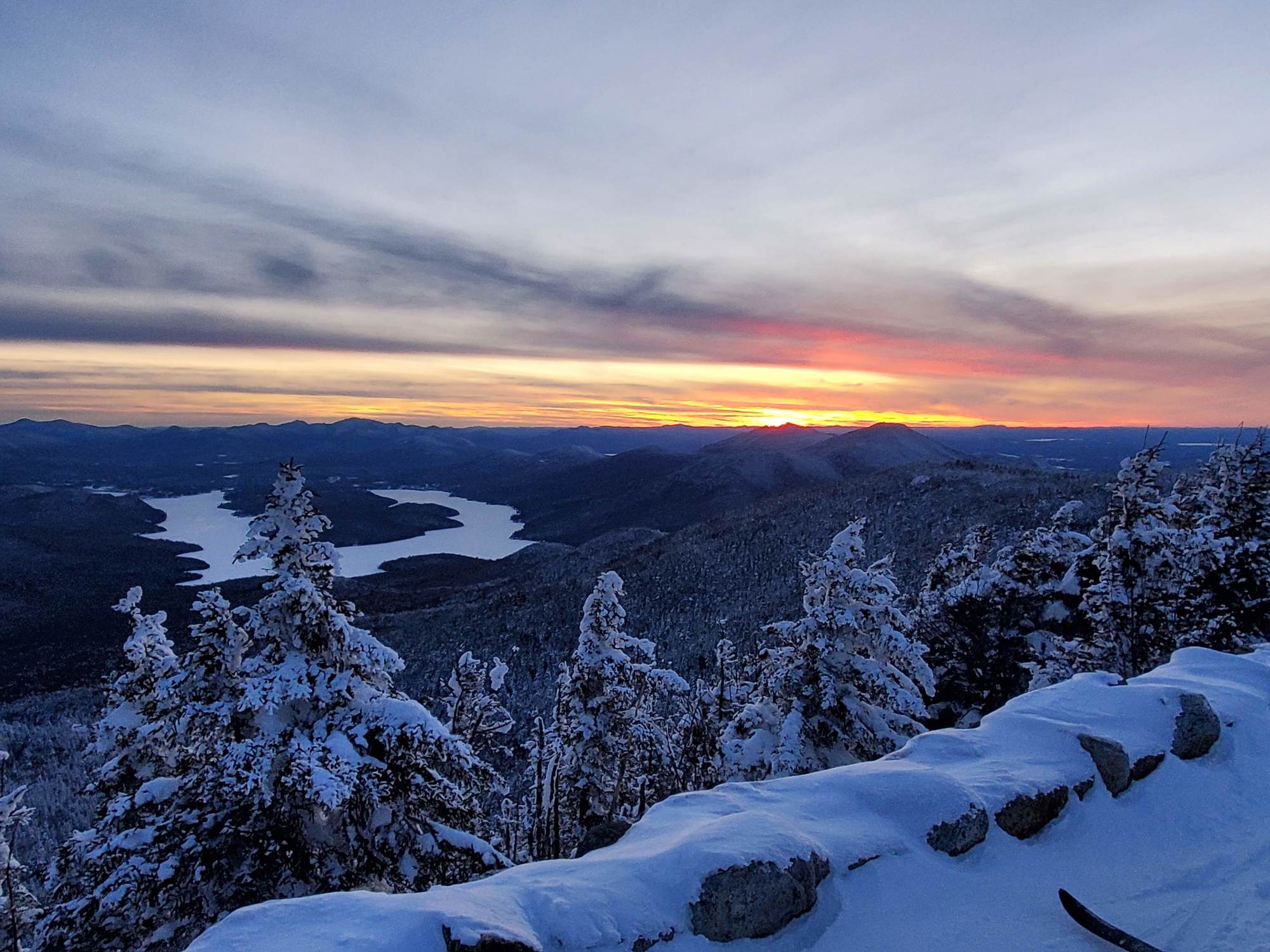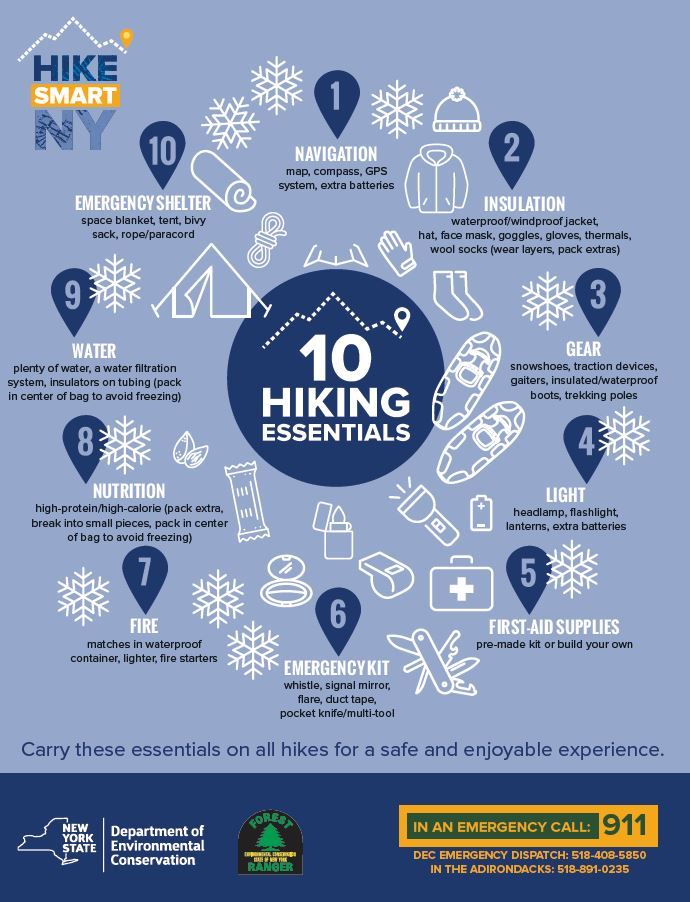DEC Adirondack Outdoor Recreation Bulletin - February 11, 2021
The New York State Department of Environmental Conservation sent this bulletin on 02/11/2021 04:18 PM EST |
| DEC Delivers - Information to keep you connected and informed from the NYS Department of Environmental Conservation |
| Share or view as a web page || Update preferences or unsubscribe |
DEC Adirondack Outdoor Recreation BulletinFebruary 11, 2021 |
|
This bulletin provides only the most recent notices. Check the Adirondack Backcountry Information webpages for more detailed information on access, outdoor recreation infrastructure, and conditions. Emergency Situations: If you get lost or injured; keep calm and stay put. If you have cell service, call 911 or the DEC Forest Ranger Emergency Dispatch, 518-891-0235. Welcome to the Adirondacks. The Welcome to the Adirondacks webpage is the place to go if you are interested in learning more about the Adirondacks. It provides information about the Forest Preserve, conservation easement lands, outdoor recreation, and Leave No Trace. Recreation Highlight: First Free Fishing Weekend of 2021
Take advantage of the first Free Fishing Weekend of 2021, this February 13 and 14, and fish New York waters for free without a license. Those new to ice fishing are encouraged to download the Ice Fishing Chapter (PDF) of DEC's I FISH NY Beginners' Guide to Freshwater Fishing for information on how to get started. Additional information, including a list of waters where ice fishing is permitted, can found on the DEC ice fishing webpage. Recent cold weather has improved ice conditions across the state, and DEC reminds those venturing onto the ice that four inches or more of solid ice is considered safe for accessing bodies of water on foot. Ice anglers should note that ice thickness can vary on different bodies of water and even on the same body of water. Anglers should be particularly wary of areas of moving water and around boat docks and houses where bubblers may be installed to reduce ice buildup. Recent NoticesThe following are the most recent notices pertaining to public lands in the Adirondacks. Please check the Adirondack Backcountry Information webpages for comprehensive and up-to-date information on seasonal road statuses, rock climbing closures, specific trail conditions, and other pertinent information. New High Peaks Wilderness:
Lake George Wild Forest: The Dacy Clearing Road gate is now open for snowmobiles. Black River Wild Forest: The Wolf Lake Landing Road in McKeever is a groomed snowmobile trail during the winter. This includes where the McKeever Trailhead Parking Area is located. Vehicles should not attempt to drive into the McKeever Trailhead, nor down the Wolf Lake Landing Road, when the road is covered with snow and/or ice. Multiple vehicles have become stuck when attempting to drive in and needed to be towed out. There is no official winter parking at this location. Last Week Taylor Pond Wild Forest: The Wilmington Trail, Catamount and Taylor Pond snowmobile gates are open with good snow coverage at this time. Lake George Boating Access Survey for Mossy Point and Roger’s Rock Boat Launches
DEC is conducting a survey to elicit public feedback on the overnight gate closure program at Mossy Point and Roger’s Rock boat launches. The information gathered will inform a more permanent program for future boating seasons and support the state's ongoing efforts to protect Lake George from invasive pests. We encourage boaters that have used either access sites to take a brief survey. The survey and comment period will remain open until March 12, 2021. Comments may also be submitted by email to info.r5@dec.ny.gov. General Notices
Visit the main Adirondack Backcountry Information page for more trip-planning resources, including travel information, weather resources, and seasonally-specific information about Adirondack recreation. Winter Conditions: Check the forecast for your destination and pack and plan accordingly. Conditions will be more severe on summits, with below freezing temperatures, snow, ice, and strong winds. Take wind chill into consideration when preparing for temperatures. Check the National Weather Service Northern Adirondacks and Southern Adirondacks Mountain Point Forecasts for selected summits. Snow Accumulation: The following provides current snowpack depths in inches as of 02/03/21 at a selection of Adirondack locations. Snow accumulation data is collected every other week. Additional data and interactive maps are available on the National Weather Service website.
Ice Safety: A minimum of three to four inches of solid ice is the general rule for safety. Ice thickness, however, is not uniform on any body of water. Learn more about ice safety. Snowmobiling: Check local club, county, and state webpages and resources, including the NYSSA Snowmobile Webmap, for up-to-date snowmobile trail information. Seasonal Access Roads: Most seasonal access roads have closed for the winter season. Check the Adirondack Backcountry Information pages for updates on specific road closures. Some roads may remain open if conditions allow. Prevent the Spread of COVID-19: COVID-19 continues to spread throughout New York State, including in the Adirondacks. Help prevent the spread and keep yourself safe by continuing to Play Smart, Play Safe, Play Local. Safety & Education
Winter recreation is fun and exciting. It can also be challenging and dangerous. Whether you’re going for a hike, a ski, snowmobiling or ice fishing, Hike Smart NY can help you prepare with a list of 10 essentials, guidance on what to wear, and tips for planning your trip with safety and sustainability in mind. Food & Water Storage Proper nutrition and hydration are key to a safe and successful hike, but winter's cold can bring challenges. In extremely cold temperatures food and water can freeze in your pack. This makes it hard or even impossible to consume what you need to stay hydrated and energized. To avoid food and water freezing, try the following:
Leave No Trace
Follow the Seven Principles of Leave No Trace to maintain minimal impact on the environment and the natural resources of the Adirondacks. Use proper trail etiquette to ensure an enjoyable experience for yourself and others and tread lightly! Give Wildlife the Thumbs Up Giving animals plenty of space is one of the best ways we can show them respect in their home. But how can you know how much space is enough? By using the “thumbs up” trick, you can determine how far you need to move away to keep both you and the animal safe. For this trick to work, you will need to stand with your arm straight out in front of you and your thumb up. Close one eye and look down your arm at your thumb. If you can “cover” or obstruct from view the entirety of the animal using your thumb, you are far enough away. If you can’t, step back until you can. Giving animals more distance than necessary is always fine, but crowding their space might make them nervous, which can result in them running away from their home, food, or offspring or even becoming aggressive. Before you stop to use the thumb trick, make sure you are in no danger. Watch wildlife from a safe distance, but never feed them or try to approach them. If an animal appears to be in distress, call a professional – don’t try to help yourself. In addition to keeping your distance, keep your voice low and avoid loud noises or sudden movements that might scare animals. |





